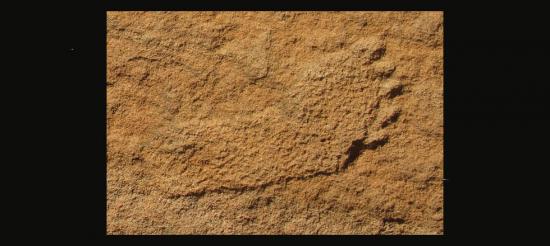Source - http://www.sciencedaily.com/releases/2013/06/130603113353.htm

Scientists and Namibian San “Bushmen” investigating Ice Age Footprints in the Pyrenees. Image: T. Lenssen-Erz
In remote caves of the Pyrenees, lie precious remnants of the Ice Age undisturbed: foot and hand prints of prehistoric hunters. The tracks have remained untouched for millennia and are in excellent condition. Dr. Tilman Lenssen-Erz of the Forschungsstelle Afrika (Research Centre Africa) at the University of Cologne and Dr. Andreas Pastoors from the Neanderthal Museum in Mettmann are going on expedition to encode the secrets of the trails. Their idea: to involve the best trackers in the world in the project in order to learn even more about the tracks. San hunters from Namibia, also known as Bushmen, will be investigating the tracks. The scientific expedition will span two continents and seven weeks.
Share This:
From the 9th until the end of June, the expedition will go to Namibia in order to prepare the San for the task in hand. The hunters are excellent trackers who can read details that evade others from trails. “The San are amongst the last known ‘trained’ hunters and gatherers of southern Africa,” explains Tilman Lenssen-Erz. “The tracks in the caves are going to be examined by people who really know something about them.”
The first press conference will be held on July 1 in the Neanderthal Museum in Mettmann before team “Tracking in Caves” sets off for the Pyrenees; it is there that the San hunters will be investigating the tracks. Andreas Pastoors wants more information pertaining to the amount and size of the tracks: “We hope to gain additional information: e.g. whether the person was in a rush, or whether they were maybe ill or carrying something. More information that will give life to the tracks.” The idea behind this is to gain a better understanding of the cultural life of prehistoric man: “Our biggest job is to interpret cave art and to find out what the people did with these cave paintings. We have to gather all information about the context of these images.”
Team “Tracking Caves”, which consists of scientists and experienced trackers Tsamkxao Cigae, C/wi /Kunta and C/wi G/aqo De!u, will then report on their discoveries from the Ice Age caves of Ariège in a press conference at the University of Cologne on July 17. The Khoisan language of Tsamkxao Cigae will be translated into English.
Dr. Tilman Lenssen-Erz from the Forschungsstelle Afrika of the University of Cologne and Dr. Andreas Pastoors from Neanderthal Museum in Mettmann are in charge of the project. The academics are cave and rock art experts. Tsamkxao Cigae works as a tracker in the Tsumkwe Country Lodge, lives in Tsumkwe; speaks good English and will act as interpreter. C/wi /Kunta works as a tracker for a professional hunter, lives in //xa/oba, a village 20 km north of Tsumkwe, which is also a “Living Hunters Museum” where the San’s contemporary and traditional living modes are exhibited.
C/wi G/aqo De!u works as a tracker for hunting teams and lives in a village ca. 20 km south-south west of Tsumkwe.
Story Source:
The above story is reprinted from materials provided by University of Cologne - Universität zu Köln, via AlphaGalileo.